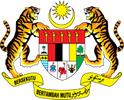Aquainformatics is one of the branches of information systems that focuses on the use of information and communication technology (ICT) in the field of aquatic science. Aquatic Science is a multidisciplinary study of aquatic ecosystems, both freshwater and marine. Some of the major areas of study in aquatic science include: limnology (study of lakes, rivers, wetlands and groundwater); biogeochemistry; aquatic ecology; oceanography; marine biology; and hydrology. Geographic Information Systems (GIS) has become part of aquatic science and limnology. The nature of water is dynamic and the characteristics associated with it are constantly changing. To enable us to keep abreast with these changes, technological advances and scientific methods are being used to improve all aspects of scientific investigation, from tracking aquatic life with satellites to computer-generated habitat mapping.
GIS is used in many areas of aquatic science including limnology, hydrology, aquatic botany, stream ecology, oceanography and marine biology. Applications include the use of satellite images to identify, monitor and reduce habitat change and habitat loss. Imaging can also show the state of inaccessible areas. Scientists are able to detect movement and develop strategies to find suitable locations for aquatic-related activities. GIS can also be used to detect invasive species, endangered species, and changes in aquatic populations. One of the advantages of the system is the availability of information that can be shared and updated at any time through the use of web-based data collection.
ENTRY REQUIREMENT
Click here for details
LIST OF EXPERTS
Faculty of Engineering
Dr. Muhamad Saufi Mohd Kassim
Dr. Aimrun Wayayok
International Institute of Aquaculture and Aquatic Sciences
Assoc. Prof. Dr. Ahmad Fikri Abdullah
Updated:: 05/02/2021 [aslamiah]
MEDIA SHARING























